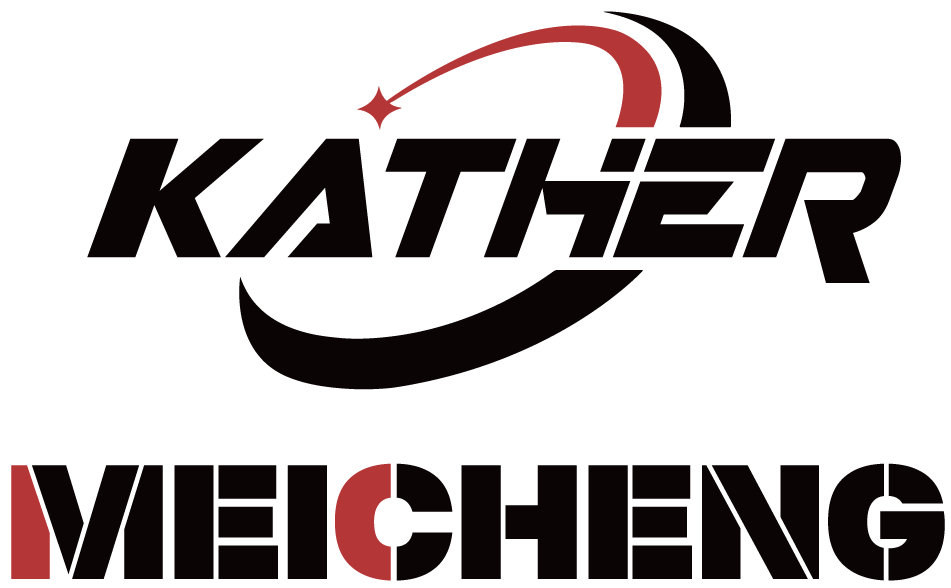The Precision Engineering Process Behind Tillage Parts
How CNC Machines Achieve Micron-Level Accuracy
Computer numerical control (CNC) machines have become essential tools in modern precision engineering, completely changing how tillage parts get manufactured thanks to their incredible micron level accuracy. When parts are made with tolerances down to around plus or minus 0.001 millimeters, everything fits together just right something that makes all the difference when farming equipment needs to work properly under tough conditions. The milling machines stand out especially because they handle several different operations during one setup session, cutting down on mistakes since there's less need for people to constantly adjust things manually. Industry reports show these machines boost production speeds roughly 50% faster than traditional methods simply because they run so smoothly and accurately. For companies making tillage components, adopting CNC tech isn't just about keeping up with competitors anymore it's practically necessary if they want to deliver consistently good quality products that farmers actually trust.
Multi-Stage Machining for Complex Component Shapes
Multi stage machining creates complex component shapes needed for efficient tillage machines used in farming equipment. The process works through several stages where each step gets progressively closer to the final shape required. Different cutting tools are brought into play at various points during manufacturing, which helps cut down on defects that could compromise how long parts last or how well they perform under stress. Most manufacturers swear by this approach because it generally boosts production speed around 30 percent compared to single stage methods. When looking at actual farm implements like plows or seed drills, those small improvements translate directly into better quality components that hold up against tough conditions in fields across the country.
Laser Measurement Systems for Real-Time Adjustments
Laser measurement systems have become essential tools in precision engineering, offering spot-on dimensional checks as things happen on the factory floor. These systems cut down on setup time dramatically while allowing quick fixes when needed something critical for keeping production lines precise. When operators get instant alerts about measurements going off track, they can correct issues before they snowball into bigger problems. Some studies indicate that factories using lasers see around a 20% drop in defects, which means fewer rejects and smoother operations all around. For companies making tillage machine components specifically, adding laser tech means workers can tweak settings right away during assembly. This real time feedback loop makes the whole manufacturing process much more reliable, ultimately leading to better quality products coming off the line day after day.
Advanced Materials in Tillage Machine Manufacturing
High-Strength Alloys for Stress Resistance
Strong alloys form the backbone of tillage equipment manufacturing, giving components the muscle they need to survive harsh farming conditions. Most of these alloys contain nickel and chromium mixtures that boost their ability to handle stress without breaking down. A recent study published in a major materials research publication found that parts made with these tough alloys last around 30% longer than standard alternatives, making them stand up well against the rough treatment common in farm fields everywhere. When manufacturers choose these upgraded materials for their machines, they're not just building better products but creating gear that farmers can count on through long days plowing rocky soil or tilling wet ground.
Anti-Corrosion Coatings for Harsh Field Conditions
Coatings that fight corrosion play a critical role in protecting metal parts on tillage machines from damage caused by wet conditions and other tough environments. Farmers commonly apply zinc plating or polyurethane coatings to their equipment because these work really well in damp fields where rust is always a problem. The results speak for themselves too many studies show that good quality anti-corrosion coatings can slash maintenance expenses by around 40%. That kind of savings makes a big difference when budgets are tight. Regular field tests keep showing why these coatings matter so much they help maintain how well machinery works over time. For this reason, most agricultural suppliers now include some form of corrosion protection as standard on new equipment.
Heat Treatment Processes for Enhanced Wear Resistance
The process of heat treatment, which includes methods like quenching and tempering, plays a critical role in making tillage components harder and more resistant to wear. Farmers know this well because these treatments really do make a difference in how long parts last when dealing with constant soil friction and all the stresses of daily operation. Some studies show that properly treated components might actually last around half again as long before they need replacing. Most industry guidelines stress that different parts require different heat treatment approaches based on what kind of work they'll be doing in the field. Looking at it practically, this careful attention to detail during heat treatment shows why manufacturers continue to produce tillage equipment that stands up to tough conditions season after season.
Quality Assurance Protocols for Farm Machinery Components
3D Scanning vs. International ISO Standards
Farm equipment makers are starting to rely heavily on 3D scanning tech these days, especially when they need to check parts against those strict ISO quality standards. What makes this tech so valuable is how accurately it measures every detail of components, letting manufacturers double check everything against those tough ISO specs. Companies report that this kind of detailed inspection cuts down on fixing mistakes later in production by around 15 percent, which means big savings over time. Getting certified by official organizations adds another layer of trust for customers looking at international quality marks. Most smart manufacturers now see these quality checks as essential rather than optional extras in their production lines.
Load Testing Simulating Extreme Field Use
Farm equipment parts go through load testing as part of standard practice, where they're put under simulated harsh field conditions to check if they'll hold up safely. When manufacturers intentionally apply stress during these tests, they get a good idea of how different parts will behave when actually used in tough farming situations. Looking at the stats from all this testing tells engineers which design choices work best against wear and tear over time, cutting down on breakdowns before they happen. Parts that survive strict load testing tend to fail much less often in the field, which means farmers end up trusting the machines more and are generally happier with their purchases. The whole testing process needs proper documentation too. Labs that have official accreditation must sign off on everything, giving manufacturers solid proof that their products meet quality standards and work reliably in real world conditions.
Traceability Systems for Every Production Batch
Having good traceability systems really helps boost accountability when making parts for farm machinery. When companies put these systems in place, they can track components much easier, which means finding and fixing quality problems happens faster. Some studies show that factories using solid tracking methods tend to cut down on product recalls somewhere around 30 percent, which shows how much better quality control gets. These tracking systems also help streamline factory work, letting manufacturers keep close watch during production. As a result, the tillage machine parts coming out at the end tend to be more reliable overall, something customers definitely notice and appreciate.
Automated Production Lines for Agricultural Parts
Robotic Arms in High-Volume Component Assembly
More and more factories are turning to robotic arms on their assembly lines because these machines work so fast and handle parts with incredible accuracy. Some reports claim production speeds can jump as much as 70% when using robotics, which really matters during those busy periods when demand spikes. Beyond just cutting down on payroll expenses, these robots basically eliminate mistakes people tend to make, and that definitely improves what comes off the line at the end of the day. For companies looking to grow without breaking the bank, investing in robotic systems makes a lot of sense. Just ask any manufacturer who's had to deal with scaling up production while keeping costs under control.

AI-Powered Visual Inspection Stations
Visual inspection systems powered by artificial intelligence are changing how defects get spotted on factory floors across industries. These smart systems can catch flaws quicker and with better precision compared to what humans can manage, scanning products as they move along assembly lines while maintaining strict quality control. Manufacturers find that incorporating machine learning makes these inspections even better over time. Factories report around 25 percent less waste after implementing such systems because fewer defective items make it through the process. The financial impact is significant obviously, but there's another side to this too environmental savings when less material ends up discarded or needing rework.
Energy Efficiency Metrics in Smart Factories
Smart factories use data analysis to cut down on energy waste, which makes them run better overall. Companies want to save money while also being kinder to the planet, so they track how much energy different processes actually consume. Factories that implement these methods often see around a 15-20% drop in their monthly power bills, especially when looking at lighting systems and machinery operation times. With green regulations becoming stricter across farming equipment manufacturing, more plant managers are jumping on board with these efficient approaches. Some have even started comparing their energy usage against competitors just to stay ahead in this rapidly changing market landscape.
Engineering Innovations in Soil-Engaging Components
CAD Simulations for Optimal Soil Flow Dynamics
Computer aided design simulations have changed the game for engineers working on parts that interact with soil. With these tools, we can actually see how machines will behave when they meet different types of ground conditions during operation. Engineers spend way less time on trial and error because they can tweak designs digitally first instead of building expensive physical prototypes. Some studies suggest around 35% savings in engineering hours thanks to this approach, which cuts down on costly mistakes and speeds things up considerably. In agriculture where innovation moves at lightning speed, having access to these simulation tools makes all the difference. They help create better performing equipment while keeping costs under control something every farm operator appreciates.
Modular Designs Supporting Multiple Crop Types
Farmers are starting to see the benefits of modular design when it comes to creating farm machinery that works across different crops. The idea is simple enough really - instead of building separate machines for each type of crop, manufacturers can build one base model and then swap out parts as needed. This saves money because companies don't have to produce dozens of specialized versions. Some studies indicate that this modular approach cuts down on production headaches by around 40%, though results vary depending on the equipment. With more farms looking for flexible options these days, especially small operations working with limited budgets, modular designs give growers another tool to get the most out of their land without breaking the bank on expensive new gear every season.
Field Feedback Driving Continuous Improvements
Getting real feedback straight from the fields where machines actually work makes all the difference in how products get improved over time. Farmers and operators know what works and what doesn't, so when manufacturers listen to this kind of hands-on experience, they can make smarter choices about redesigning parts. According to recent surveys, farm gear that incorporates these field observations tends to score about 30 percent higher in customer satisfaction ratings. That's why companies that want their equipment to stand out need to bring actual users into the development process early on. After all, nobody understands the daily grind better than those who use the machines every single day across America's vast farmlands.
FAQ
What is CNC technology and why is it important in manufacturing tillage parts?
CNC, or Computer Numerical Control, allows machines to achieve micron-level accuracy, essential for making high-quality tillage parts that fit seamlessly together, improving functionality and efficiency.
How do laser measurement systems enhance precision in manufacturing?
Laser measurement systems provide real-time dimensional checks, alerting operators to deviations instantly, thus maintaining high precision and reducing defect rates.
Why are high-strength alloys used in tillage machinery?
High-strength alloys offer essential tensile strength and stress resistance, significantly increasing component longevity and ensuring durability in demanding agricultural environments.
How do anti-corrosion coatings benefit agricultural machinery?
Anti-corrosion coatings protect metal components from environmental factors, prolonging equipment life and cutting maintenance costs.







